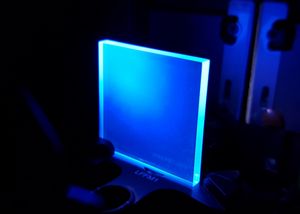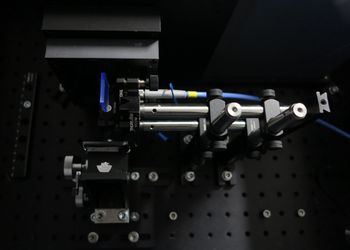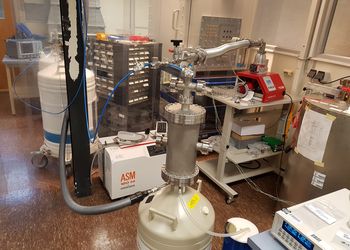One of the main experimental challenges for LEGEND is the reduction of background coming from radioactivity in the materials close to the germanium detectors. The best would be to have no material close to the detector at all. However, the detectors need holders to fight gravity and cables to get the signals out. Even after these components are reduced as much as possible, they form a major source of background.
This background predominantly comes from radioactive decays which lead to photon emission. Photons can enter the germanium detector and deposit part of their energy inside; the dominant process for this is Compton scattering. The part of the energy deposited in the detector can fall into the energy window in which the signal is searched for. If the photon escaping the detector is not registered, the event becomes a background event indistinguishable from a signal event. The counter-measure are active veto-systems around the germanium detectors. These systems register the photons escaping the germanium detectors and thus tag the events inside the germanium detector as background.

The counter-measure are active veto-systems around the germanium detector. PEN is a common plastic that can be produced cheaply. It can serve in detector holders and be formed into a shell around the detectors. Its special feature is, that it scintillates. Thus, it can be used to detect the escaping photons. However, it might need the help of some Argon, in which the photons interact first, because the thickness of any PEN shell has to be limited. Even though PEN can be produced with good radiopurity, it makes no sense to create a lot of background in the hope of detecting it afterwards.
The first task for the group is to determine how much PEN scintillates and how easy it is to bring the light out. The material itself has to be qualified and the optical properties like attenuation length measured. In order to create an active veto, simulations about the light yield in the system are needed and finally a shell for germanium detectors has to be designed and evaluated.
Further information on the PEN group
Phone number: +49 89 32354-extension
| name | function | extension | office | |
|---|---|---|---|---|
| Caldwell, Allen, Prof. Dr. | Director | allen.caldwell | 529 | A.2.51 |
| Gooch, Christopher | Engineering | christopher.gooch | 242 | A.1.63 |
| Majorovits, Béla, PD Dr. | Senior Scientist | bela.majorovits | 262 | A.2.71 |
| Schulz, Oliver, Dr. | Senior Scientist | oliver.schulz | 521 | A.2.61 |
| Singh, Maninder, Ph.D. | Postdoc | maninder.singh | 295 | A.2.57 |
| Wacker, Ina | Secretary | ina.wacker | 207 | A.2.49 |
| Zaitseva, Eugenie | Student | eugenie.zaitseva | 337 | A.2.73 |
PEN as self-vetoing structural Material
arXiv:1708.09265 [physics.ins-det]


